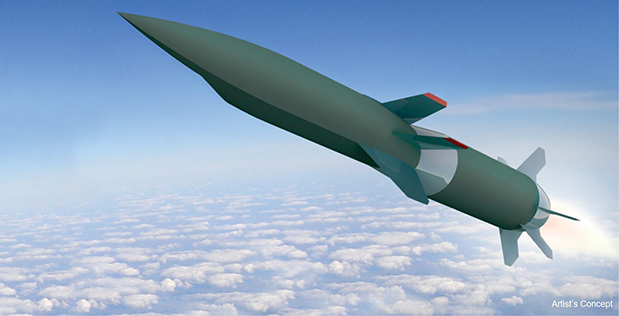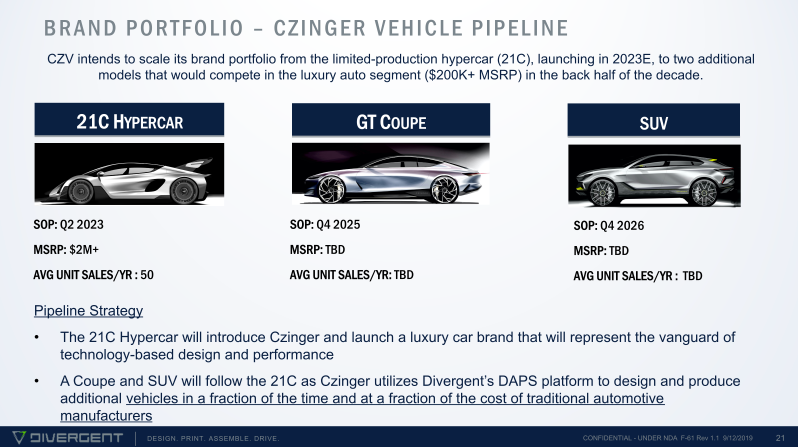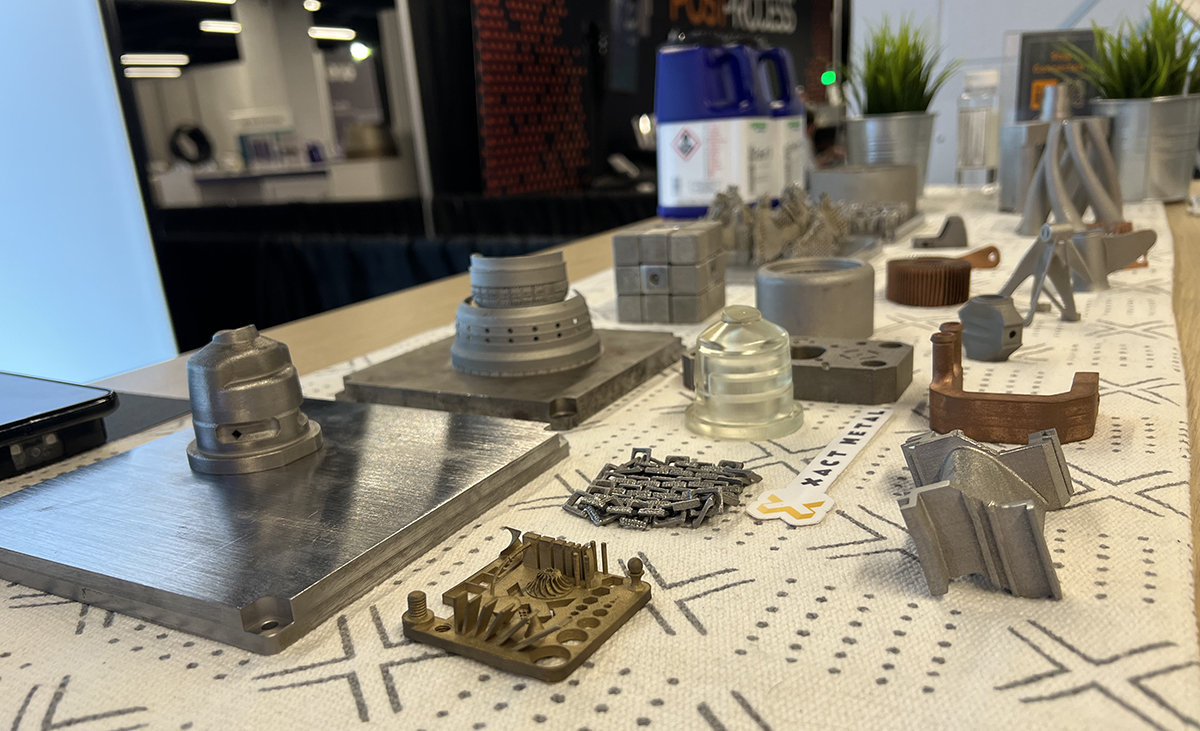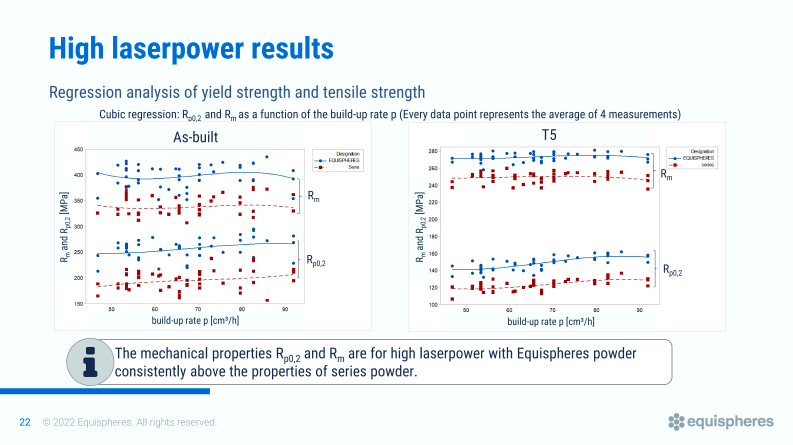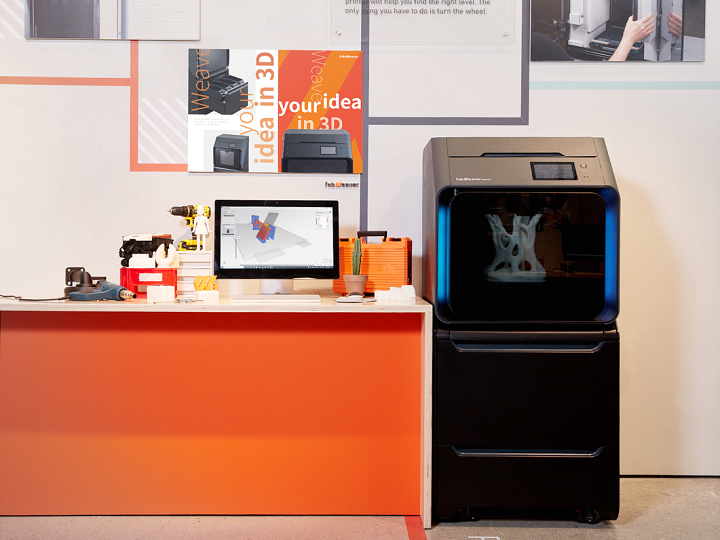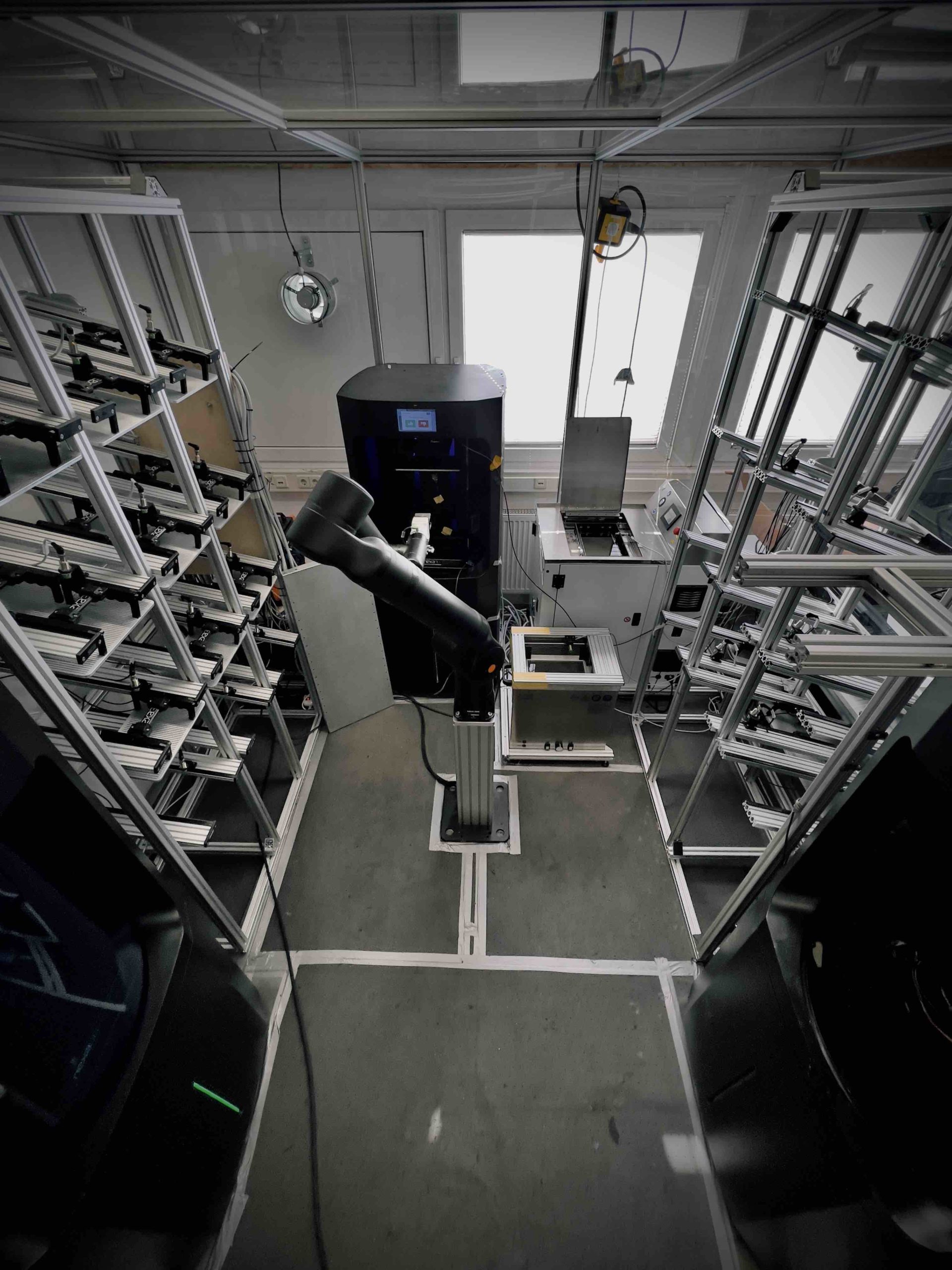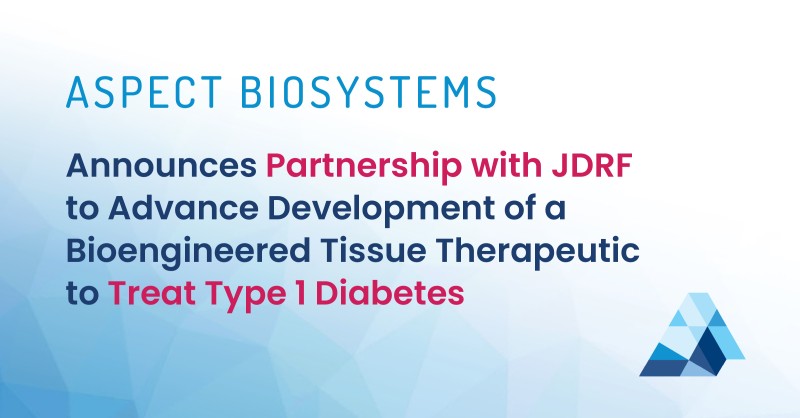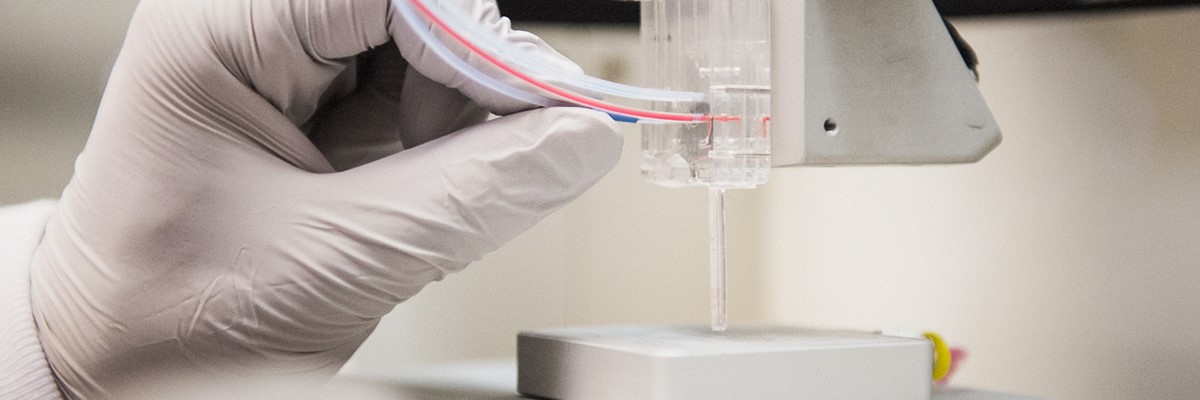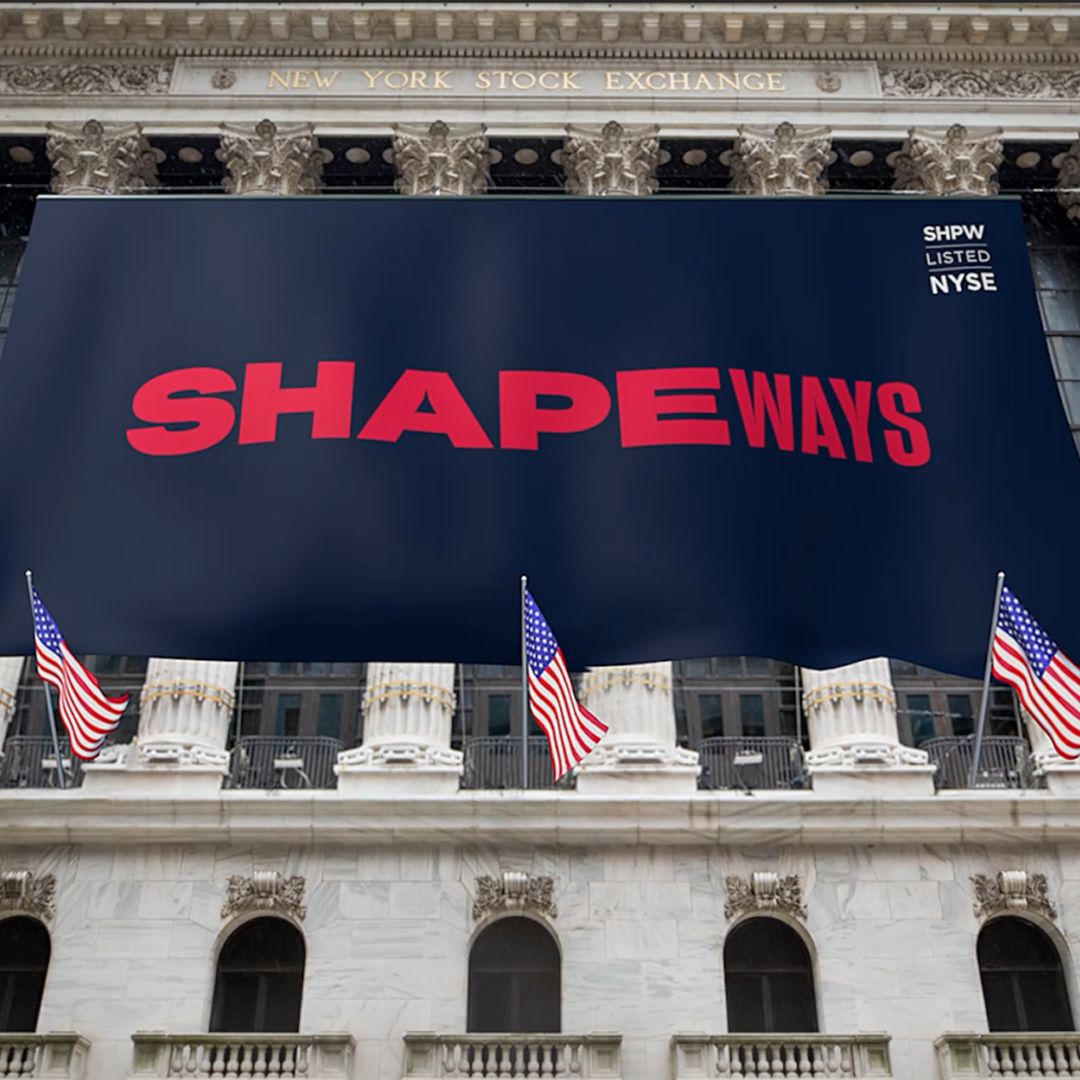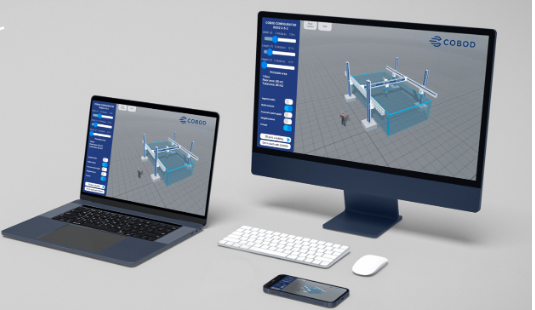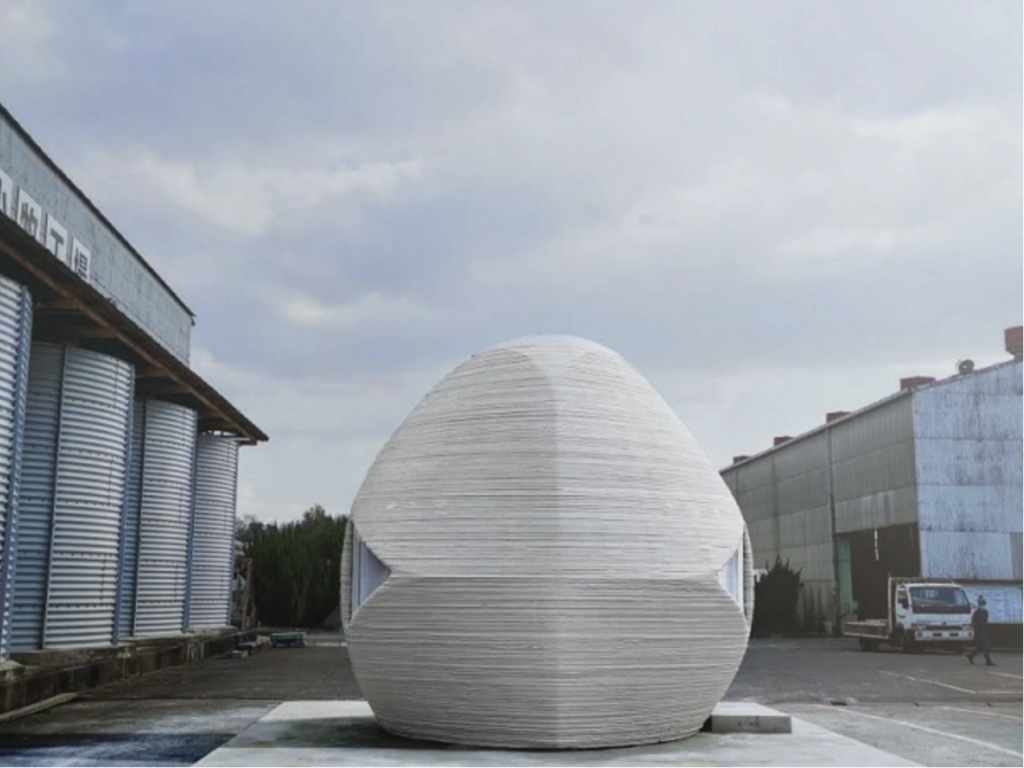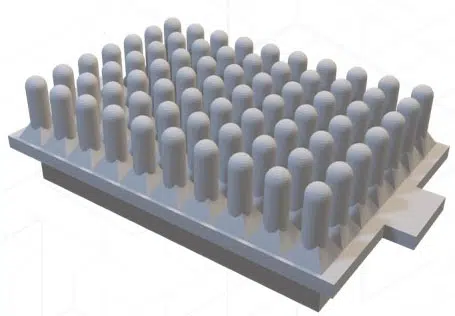3DPrint.com | The Voice of 3D Printing / Additive Manufacturing |
- Aerojet Rocketdyne’s Scramjet Engine Powered US Hypersonic Vehicle Flight
- Direct Sound Printing, A Novel 3D Printing Method
- 3D Printing Camaraderie Returns in Full Force at AMUG 2022
- MaxResolution3D & Production to Go Offer Production Cells
- Aspect Biosystems Partners With JDRF to Treat Diabetes
- 3D Printing Financials: Shapeways Posts Profit for FY2021, Weak Outlook for 2022
- MolyWorks Obtains ISO: 9001-2015 and AS: 9100AD
- 3D Printing News Briefs, April 7, 2022: Construction & Research
- State of the Hypersonics Arms Race: US to Work With Australia and the UK
- AM Coalition Sends Advisory Letter to Congress on America COMPETES Act
| Aerojet Rocketdyne’s Scramjet Engine Powered US Hypersonic Vehicle Flight Posted: 08 Apr 2022 07:00 AM PDT We recently learned that the United States tested a hypersonic weapon in mid-March. At the time, Pentagon officials decided to keep it under wraps to avoid further tensions with Moscow amid an escalation in the Ukraine war and following a recent Russian attack on a weapons depot with a hypersonic missile. As a result, announcements were delayed until yesterday when we learned that the U.S.’ Hypersonic Air-breathing Weapon Concept (HAWC) had been successfully tested in a joint effort between the Defense Advanced Research Projects Agency (DARPA) and the U.S. Air Force. Launched off a B52 bomber for 327 seconds, the hypersonic cruise missile produced by Lockheed Martin reached heights greater than 65,000 feet and was powered by an advanced Aerojet Rocketdyne (NYSE: AJRD) scramjet engine, which is built using advanced technologies like additive manufacturing (AM). Focused on developing and demonstrating critical technologies to enable an effective and affordable air-launched hypersonic cruise missile system, the HAWC program builds on pioneering scramjet projects. A few examples include work on the Rockwell X-30 National Aero-Space Plane from the 1990s, as well as uncrewed flights of NASA’s small X-43 vehicles and the U.S. Air Force’s X-51 Waverider. This new and historic flight, which reached speeds above Mach 5, furthers the understanding of operations in the high-speed flight regime and opens the door to an industry that is developing super-high-speed armaments with new processes and techniques, including 3D printing. Eileen P. Drake, Aerojet Rocketdyne CEO and President, said the pioneering company is well-positioned to support the nation’s hypersonic development and production.
A world-recognized aerospace and defense leader, Aerojet uses additive manufacturing in many of its undertakings. For example, the company explained that through 3D printing, it uses 95% fewer parts in its scramjets than it employed for the history-making scramjet engine that powered the United States Air Force X-51A Waverider to sustain hypersonic speed.
Along with innovative scramjets, Aerojet Rocketdyne manufactures a wide range of products to support hypersonics, including solid rocket motor boosters, warheads, and missile defense technologies. Like most of its major aerospace competitors, Aerojet has increasingly relied on AM to build parts for its rocket, hypersonic, and electric propulsive systems for space, defense, civil and commercial applications. The AM team at Aerojet relies on G.E. Concept Laser and EOS machines for their selective laser melting requirements and superalloys, mostly nickel-based, for the engine parts being 3D printed. During the last decade, it has been actively working to develop AM platforms to build components that can reliably withstand the extreme operating environment of an engine, whether it is for space travel or Earthbound. Following long-term technological collaborations with many government agencies and private customers, Aerojet has continued its impressive momentum in 3D printing. Above all, it seems to grasp the future potential of fabricating lightweight, complex geometries and high-value systems, especially as the U.S. defense unit expands further using AM technology for hypersonic propulsion. 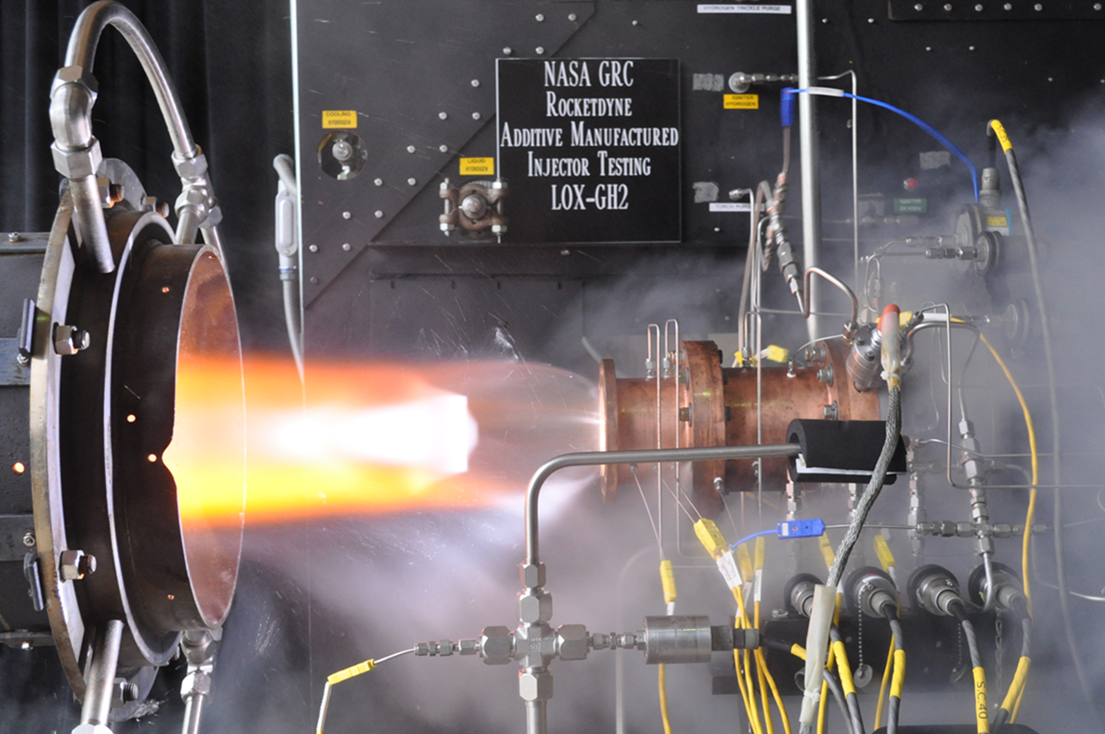 A Test was conducted by NASA and Aerojet Rocketdyne on a 3D printed hydrogen rocket injector. Image courtesy of Aerojet Rocketdyne. As the second successful flight in DARPA’s HAWC program, the hypersonic weapon concept missile demonstrator set a record for hypersonic flight under scramjet power. Last September, a different vehicle configuration from another contractor team led by Raytheon Technologies also reached hypersonic flight.
Air-breathing vehicles utilize air captured from the atmosphere to achieve sustained propulsion, explains DARPA. The speed and maneuverability of such hypersonic cruise missiles allow both evasions of defenses and quick strikes, while their kinetic energy can effectively destroy targets even without high explosives.
The post Aerojet Rocketdyne’s Scramjet Engine Powered US Hypersonic Vehicle Flight appeared first on 3DPrint.com | The Voice of 3D Printing / Additive Manufacturing. |
| Direct Sound Printing, A Novel 3D Printing Method Posted: 08 Apr 2022 06:30 AM PDT 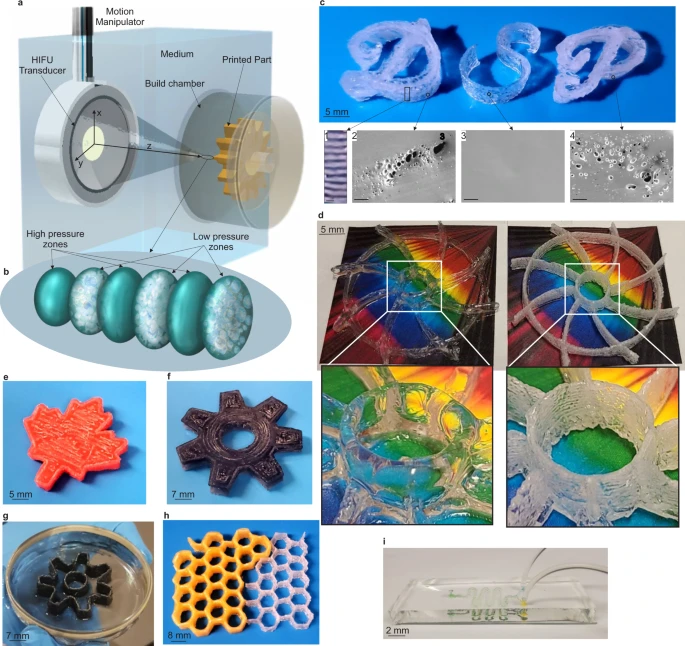 Direct Sound Printing (DSP) process schematic. Image courtesy of Habibi, M., Foroughi, S., Karamzadeh, V. et al. Direct sound printing/Nature Communications.
A very exciting variant is Remote Distance Printing (RDP), where you can let the acoustic waves pass through a wall or skin, let’s say, to build an object on the other side of that wall without touching it. The team feels this could be used for “emote repairing or on-site maintenance of hidden parts in aerospace industries and in-vivo remote and noninvasive bioprinting of inside body parts in medical applications.” They further go on to test printing as “noninvasive deep inside body printing.” Demonstrating that it could be possible, for example, to harden and build a structure inside the human body while the 3D printer was outside of it. This could potentially be a completely new approach whereby, for example, you could inject a material and then locally print it into a defined structure without surgery. You could get a facelift without getting cut open or do a transaction in a patient using an injected material that is then 3D printed in place, turning it from a liquid into a staple. It remains to be seen if these applications will work at scale and find commercial venues. But, new technology is always very exciting and gives us new perspectives. Mohsen Habibi and Muthukumaran Packirisamy have filed a patent application and obtained a patent which means that this technology has been a long time coming and points to them seeking commercialisation in some way. In their patents, they talk about two methods where “Selective Spatial Solidification forms the piece-part directly within the selected build material whilst Selective Spatial Trapping injects the build material into the chamber and selectively directs it to accretion points in a continuous manner.” This may point to them having an eminently controllable process that could in a layer less way produce controlled porosity or could selectively sinter powder in a new way. The post Direct Sound Printing, A Novel 3D Printing Method appeared first on 3DPrint.com | The Voice of 3D Printing / Additive Manufacturing. |
| 3D Printing Camaraderie Returns in Full Force at AMUG 2022 Posted: 08 Apr 2022 06:00 AM PDT Within the 3D printing industry, the Additive Manufacturing Users Group (AMUG) Conference is like no other. As the group's motto goes, it is "for users, by users." That results in an exclusive environment where the love for the technology and the community is palpable. Last year's coverage of the conference reflected a joy at returning to the event, but travel and meetings were still off limits for many. So, by the time the 2022 AMUG Conference rolled around, the show had returned to near normalcy. The only difference from events past was that this feeling of love was that much stronger after a year of COVID and another year of regrouping. In addition to the hugs and selfies abound, the event was packed with informational sessions, expo booths, and the perks that only AMUG can provide. This wasn't purely promotional, as is the case with most trade shows. Stretching all the way from Saturday, April 2 to Thursday, April 7, the show began with a two-day ASTM certificate course dedicated to establishing or updating an AM facility to produce safety-critical parts with metal laser powder bed fusion (LPBF). With this training continuing into the following Sunday, other preliminary events included a tour of DMG Mori facilities in the Chicago area, as well as a new member welcome. By that evening, attendees were already more than pumped to be there, posting countless selfies on the way to the event and even more when they arrived. Monday saw attendees ease into the event with a welcome address, followed by a networking lunch, an afternoon of sessions, and a dinner. Then, the event kicked off in earnest on Tuesday with the crowning of this year's DINOs and a keynote from Kevin Czinger, founder and CEO of Divergent 3D. Czinger provided further insights into his business plans and actual manufacturing operations. Without saying who, the inventor revealed that he will be unveiling the first public partnership with an original equipment manufacturer (OEM) in the automotive space this September. 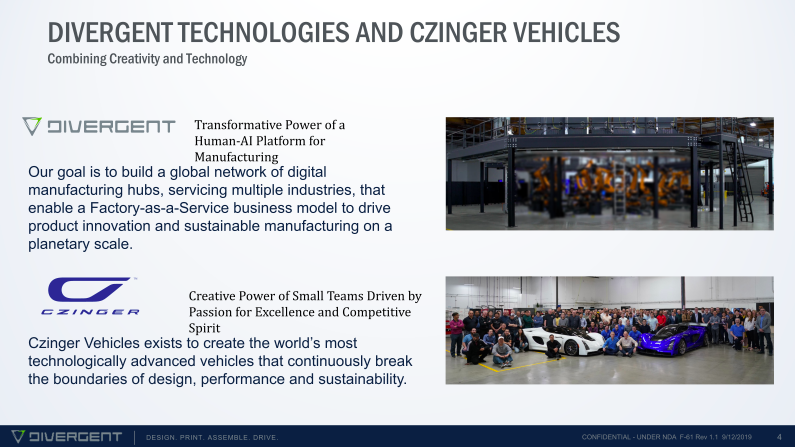 In the upper right is a blurred out photo of the company's Divergent Adaptive Production System. Image courtesy of AMUG/Divergent 3D.
He also revealed a photo of Divergent's manufacturing cell, blurred out at the request of the firm's IP lawyers. The 20-meter-wide system performs fixture-less assembly and is capable of putting together 10,000 complete vehicle structures or up to 150,000 sub-frames. This universal assembly cell, currently in Los Angeles, is going to be replicated in Europe in 2024, according to the CEO. Before then, Divergent will be unveiling a series of luxury vehicles, including a coupe and an SUV, at Monterey Car Week in August 2022. After the keynote, the day was once again filled with informational talks and panels that carried across the rest of the week. Topics ranged from binder jetting of reactive materials and X-ray inspection of AM parts to repairing with directed energy deposition and 3D printing for mass production in Asia. For instance, David Jankowski, Commercial Operations Leader at Xact Metal, discussed the possibilities with low-cost metal 3D printing. He reflected similar opinions as 3DPrint.com Executive Editor Joris Peels about how a more affordable system allows more market participation while lowering outsourcing costs. Aluminum powder maker Equispheres presented alongside BMW, which is conducting tests on the firm's materials. The Canadian company has demonstrated that users can increase production speeds by a factor of three, thus enabling customers like BMW to drive up throughput and reduce costs. Due to the extreme sphericity of Equispheres aluminum particles, the powder is packed densely and uniformly. In turn, it can absorb laser energy evenly and efficiently. This means that thicker powder layers can be spread, allowing for faster vertical build speed and scan speed and increased hatch distances that speed up horizontal printing. In addition, with speed ramped up, more parts can be made more quickly, thus cutting costs up to 50 percent. BMW validated Equispheres' powder on high- and medium-powered PBF machines. The auto giant determined that the firm's aluminum consistently performed better than a standard powder. This included yield strength, tensile strength, elongation at break, and other properties. Moreover, costs were estimated to be about 12 percent less for production parts. The car maker believes that it can optimize Equipsheres material further by increasing layer thickness and laser power. It will also explore the production of prototype parts and reproducibility. Of course, there was plenty of knowledge to be gained outside of the learning sessions, in the exhibition hall and through networking with other attendees. The expo space was divided into three rooms, with only platinum sponsors able to display wares throughout the duration of the show. In speaking to representatives from the various booths, I was able to catch differentiators among company products. With Kristin Mulherin, general manager of Powder Bed Solutions at Nexa3D, I learned more about the quad laser technology behind the firm's QLS 350. Obviously, due to the use of four lasers, the machine can achieve four times the productivity of a single laser sintering machine. One would think that a company like EOS would have applied their work in metals to polymers in this regard. Interestingly, Nexa is also introducing automation to its QLS system to attempt to achieve lights-out manufacturing. At the moment, this includes a machine capable of loading and unloading powder. However, Mulherin said that, in its research facility in Ventura, California, the company has taken the technology further with a shuttling robot capable of conveying powder to and from the printer. I also spoke to Giles Gaskell, Commercial Business Manager, and Mathieu Pérennou, Global Business Development Director of Additive Manufacturing, from Hexagon Manufacturing Intelligence. They elaborated on how the company's solutions cover nearly the entire 3D printing workflow to attempt to optimize quality and reduce errors in AM. This included enhanced design for additive, with topology optimization and generative design, as well as simulation for part performance and the 3D printing process itself. This latter element makes it possible to pre-compensate for distortions that occur during the printing process. Once a job is complete, Hexagon scanning tools can be used to check the print against the original CAD file to perform quality control for certification purposes or improve the design for subsequent prints. Hexagon is also the key supplier of CT scan software, which is crucial for true validation, as this is the only true, non-destructive method for actually seeing inside of a part. With all of this in mind, it's no surprise that Gaskell was finally awarded a DINO at AMUG 2021. What makes this unique is that he was the first and only 3D scanning expert to earn the prestigious title so far. Other exhibitors included the likes of Würth Additive Group, the newly formed 3D printing division of the massive fastening and assembly materials company, Germany's Würth Group. The team brought with it the Kurtz Ersa-branded, low-cost LPBF system from Laser Metal Innovations. In this writer's mind, Würth may be poised to play a major role in the industry. The division's CEO, AJ Strandquist, pointed out how many of the additive brands they supply lack the marketing and PR clout that Würth can provide. However, once attached to the German firm, these products are instantly plugged into a network of 400 Würth businesses across 80 countries. The uniqueness of each product also stands out from the overall market. The Kurtz Ersa, for instance, is one of only a handful of low-cost metal laser sintering machines out there. Würth sells this alongside the Arburg Freeformer machine, the only system of its kind; Markforged metal and carbon fiber machines; and vat photopolymer 3D printers from Rapid Shape. Würth Lead Technician Jacob Ayers pointed out that Rapid Shape has introduced a significant amount of automation to its 3D printers, which could ultimately pair well with the warehouse robotics that Würth itself has at a few of its own facilities. I also got a chance to meet up with the representatives at fabWeaver to understand how its parent company, Sindoh, fits into the larger market. Interestingly, fabWeaver is targeting the industrial space with the type A350, an engineering grade fused filament fabrication (FFF) machine. At the same time, Sindoh itself has several smaller FFF printers alongside a laser sintering system. For now, the fabWeaver is capable of 3D printing with ABS and ASA within its heated chamber, but higher temperature materials may be possible in future iterations of the machine. Of course, AMUG wouldn't be what it is without the off-site event. Only three event organizers are made aware of the location of the festivities, leaving all other attendees, including host Todd Grimm, in the dark. This year, dinner was held at the Old Post Office, where attendees were not only treated to a fabulous meal but awesome entertainment, from arcade games to karaoke. The star of the show was binder jetting expert Dan Brunermer, whose rendition of "Mr. Brightside" by The Killers was not to be missed. After a night of flapper-era gambling at the Chicago Hilton, the event came to a graceful ending on the final day. The technical leader of Additive Manufacturing Research at Ford Motor Company, Ellen Lee, gave the closing keynote, highlighting the legendary automaker's use of AM and what needs to happen in the future for the technology to take off in automotive. Contrasting automotive AM with aerospace's adoption of the technology, Lee explained that vehicle production requires parts in the thousands to millions of units; in a variety of materials, with high cost sensitivity; with flexible production; at a fast rate; and built in a repeatable fashion. Partnering with GM and Stellantis, Ford and the United States Council for Automotive Research developed a roadmap to achieve this. It begins with a focus on high-value, high-mix parts and leads to high throughput and productivity and ends with distributed manufacturing. Key for Lee, whose career has been built on researching sustainability at Ford, is accomplishing this in an ecological manner. For that reason, among the considerations when it comes to design for AM is the ability to disassemble a vehicle at the end of its lifespan so that the resources can be recycled for future use.
With Czinger opening up the event and Lee closing it, the dialogue reflected the circular nature of the economy these companies are chasing. Altogether, it provided a sense of closure to the show as attendees took in the last sessions, meals, and chats before heading back home. As the industry progresses, however, there was a sense that, even after two decades in existence, this could only be just the beginning for AMUG. There will be future discussions, nights on the town, and award ceremonies for the legendary organization. We can only wonder how the maturing of the sector will impact the close-knit event as it goes from a $10.6 billion industry to something even bigger. The post 3D Printing Camaraderie Returns in Full Force at AMUG 2022 appeared first on 3DPrint.com | The Voice of 3D Printing / Additive Manufacturing. |
| MaxResolution3D & Production to Go Offer Production Cells Posted: 08 Apr 2022 05:30 AM PDT For a long time, I’ve bemoaned the lack of systems integrators in 3D printing. We have resellers who will sell you a box and help you troubleshoot its contents. But, we don’t really have firms that will integrate printers, scanners, and robot arms and make the perfect 3D printing manufacturing solution for you. If you want to automate everything from software to parts getting put in boxes, then right now, you’ll mostly have to do this yourself. It is unreasonable for us to expect people to do this, and it slows down the adoption of AM, keeping us a promising cottage industry with so much potential but no immediate future. That’s why I’m so enthusiastic about Max Resolution 3D. This German firm is an automated production provider making parts in Berlin. You can meet with them, and they’ll discuss your part needs. They will test and see if the material and part are viable. Then they will do a production run in house for up to 50,000 parts. The team wishes to “make the series production via 3D printing accessible for everyone, especially the Small & Medium Enterprises.” Eliminating “over-production or unnecessary plastic waste through production on demand, no supply chain failures through local production in Berlin, and no high investment costs in injection molding tools.” To do this, the team has coupled Nexa3D printers with a robot arm in a production cell to automate the process. The Max Resolution team didn’t have to develop this production cell themselves; instead, it was made by another German startup, Production to Go. This company makes the cells which it claims can make example parts such as a COVID Swab “500 parts in 148 minutes, theoretical number of items per year: 800,000, print jobs per year: 1,600.” Production to Go also makes cells for the Stratasys RPS, a printer I adore, and sells the Smart3D, which is purported to be a large FDM production system with a heated chamber. 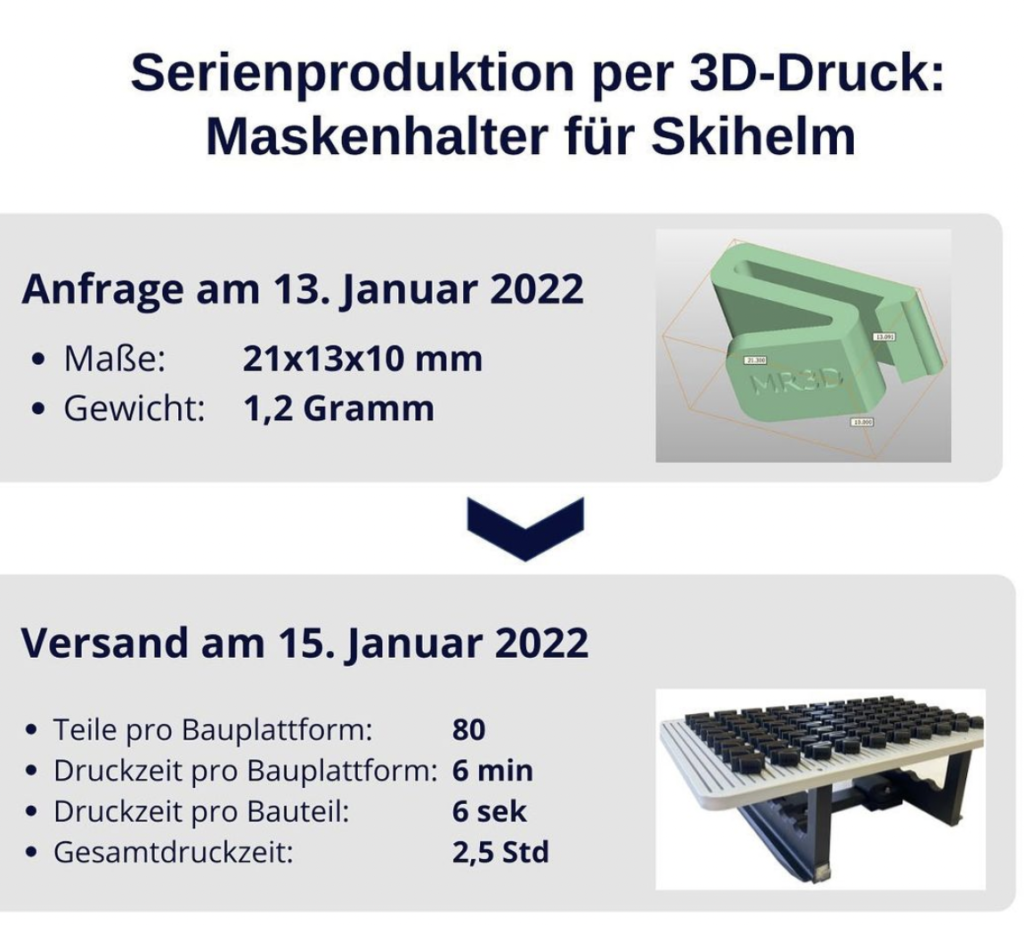 Max Resolution gives as an example a clip that they got a request for and two days later came up with a calculation for. Image courtesy of Max Resolution. In this case, these startups are aiding each other by making 3D printing more accessible. This builds value for the OEMs by making their products more suitable for low-cost manufacturing and more likely to be bought quickly as a part of an implementable manufacturing solution. At the same time, extra innovation, work, and capital are being put into making their systems suited for manufacturing, and they don’t have to do anything just focus on making a better 3D printer. These firms are really a force multiplier for each other and our industry. They can lower barriers to entry and hasten sales and implementation cycles. By focusing, they could make industry-specific or even part-specific solutions that could further quicken adoption and make parts less expensive. Overall what they are doing is taking a powerful box and turning it into a manufacturing solution. And yes, we know that everyone already offers solutions in the press release. But, in reality, 3D printing for manufacturing today is a guy opening a box and then filing down or cutting away things by hand before moving them to another box or two. This is silly and will never work in terms of cost, reliability and repeatability. If we want to make true manufacturing solutions and really manufacture at scale, then we will need services and systems integrators like these companies. Through networks of these firms reselling, creating, and deploying manufacturing solutions, we can penetrate the globe. Of course, Nexa3D or Stratasys don’t need to be everywhere or don’t need to make the perfect solution for manufacturing for every use case, but other players in the market can do this. This kind of behaviour and market evolution with resellers taking on more of an integration role and offering more than boxes is a sign of maturity. I really believe that such behaviour can lower part costs and help deploy 3D printing in more places more rapidly. What other examples have you seen of a network of integration and automation companies emerging? What other helpful signs do you see in our industry of our maturity? The post MaxResolution3D & Production to Go Offer Production Cells appeared first on 3DPrint.com | The Voice of 3D Printing / Additive Manufacturing. |
| Aspect Biosystems Partners With JDRF to Treat Diabetes Posted: 08 Apr 2022 05:00 AM PDT Canadian biotech startup Aspect Biosystems, founded and led by biomedical engineer Tamer Mohamed, has partnered with the nonprofit organization Juvenile Diabetes Research Foundation (JDRF) to develop bioengineered tissue therapeutics to treat type 1 diabetes. People with type 1 diabetes cannot produce insulin on their own, so they need to take it, either via injection or by using a pump, to survive. Either way, insulin is the essential treatment doctors employ worldwide to manage blood sugar in people with the disease. However, the goal of this new joint project is to transform how we treat the condition. The partnership will allow Aspect to develop a bioengineered tissue therapeutic for type 1 diabetes that will provide insulin independence and control of blood sugar without the need for chronic immune suppression. In addition to funding, JDRF is also contributing strategic support through its deep expertise and vast network in the diabetes field. For the task, Aspect is leveraging its proprietary bioprinting technology, therapeutic cells, and materials science to create a pipeline of cell-based tissue therapeutics that replace or repair damaged organ functions. These therapeutics are rationally engineered to be biologically functional, immune-protective, and suitable for surgical implantation to treat diseases such as type 1 diabetes. JDRF's Assitant VP of Research, Esther Latres, said the organization has led cell-based tissue therapy for more than 20 years.
A very promising cure in sightA spinoff out of the University of British Columbia (UBC), Aspect Biosystems made waves when it announced in 2013 that the company was ready to use live human cells to create and build living human tissue. Now described as a pioneering microfluidic bioprinting company, Aspect created its own bioprinting technology in which cells are combined and suspended in a liquid form hydrogel to create functional living human tissue models. From its proprietary Lab-on-a-Printer technology, the startup created its flagship bioprinting system, the RX1, which relies on microfluidics to allow seamless cell and material patterning. Engineered to be compatible with a wide range of biomaterials, the bioprinter can help scientists create complex, functional tissue for research purposes. But Aspect is not just about making bioprinters; the company leverages its technology to transform drug discovery and development as well as cellular therapy, aiming to treat various diseases, including diabetes. Targeting a middle ground in the broad space of bioprinting, just between cell-free, biocompatible implants and the creation of an organ, Aspect is working on taking its therapeutic tissues to the clinic to impact patients' lives directly. Up until now, its technology has been enabling advances in fundamental biology, drug development through novel pre-clinical models, and regenerative medicine, and this is the second time that Aspect has been involved in diabetes research and development. With researchers from the University of Calgary, Aspect has developed a growing relationship to help their decades-long work of bioprinting living pancreatic tissues. In November 2021, this collaboration hit a milestone when Associate Professor Mark Ungrin and his lab in the University of Calgary's Faculty of Veterinary Medicine (UCVM) developed human pancreatic islets—pseudoislets—to give them a better chance of survival when transplanted into people with type 1 diabetes. Ungrin's lab designed the pseudoislets as a way to package islet cells—typically found in the pancreas, where they regulate blood sugar levels—with controlled and reproducible size and improved survival and function both in culture and after transplant. The cell repackaging processes were then integrated into Aspect Biosystem's work bioprinting pancreatic and other live tissues. Later, at the International Pancreas and Islet Transplant Association (IPITA) conference, Aspect presented data highlighting the successful blood glucose regulation in animal models of type 1 diabetes for 90 days after implantation. The work helped advance Aspect's bioprinted therapeutic program towards clinical evaluation, which could, ultimately, introduce a transformative cure for diabetic patients dependent on insulin injections. This new partnership is rooted in the same desire to find a cure for type 1 diabetes. Like its previous collaborations, this study could have a radical impact as it lays the groundwork for future treatments and maybe even cures. The cell-therapy landscape is rapidly evolving, but one of the biggest challenges is still the technology and translation from the research lab to the clinic. Those are two significant hurdles that Aspect is trying to tackle.
The post Aspect Biosystems Partners With JDRF to Treat Diabetes appeared first on 3DPrint.com | The Voice of 3D Printing / Additive Manufacturing. |
| 3D Printing Financials: Shapeways Posts Profit for FY2021, Weak Outlook for 2022 Posted: 07 Apr 2022 07:30 AM PDT Since going public in September 2021, Shapeways' (NYSE: SHPW) strategy has been to scale across materials, markets, and technologies and broaden the rollout of additional phases of its software as a service. In its first full-year earnings report, the 3D printing service bureau announced revenues of $33.6 million, a 6% increase compared to 2020 and slightly above guidance provided in the previous quarter. Shapeways also recorded net profits of $1.8 million or 4 cents per share, reversing the net losses incurred in 2020, which were $3.2 million, or 9 cents per share. During the last quarter of 2021, Shapeways raked in revenues of $8.3 million, 5% less than revenue for the same period in 2020. However, it continued the expansion of its additive manufacturing (AM) offering by launching new technologies and materials while shifting the growth focus to middle-market and enterprise opportunities, which have longer sales cycles. A breakdown of its revenues shows that in 2021 direct sales (where Shapeways provides AM services directly to the customer who selects the model specifications) accounted for roughly 76% or $25.6 million, and that was an increase of 8% year-over-year. Slightly offsetting this was revenue for marketplace sales (a platform for shop owners to sell their products to their customers utilizing the Shapeways e-commerce website). For 2021, marketplace sales accounted for about 24% of revenue or $7.8 million, and that was down 2% year-over-year. Currently offering eleven 3D printing technologies and roughly 100 materials and finishes, Shapeways is set on scaling innovations. Over the years, the New York-headquartered brand has delivered over 23 million parts to approximately one million customers in over 175 countries. In the fourth quarter of 2021 and into the first quarter of 2022, it began deploying a broad Desktop Metal (DM) machines portfolio to expand its global manufacturing footprint across metals, elastomers, polymers, composites, and digital casting applications. The printers are expected to play a significant role in Shapeways' growth and expand its additive capabilities. Aside from the three new DM machines currently in use, Shapeways anticipates implementing up to eight additional DM hardware by the end of the year, which could become a vital revenue source for the company as they come online in increased capacity. 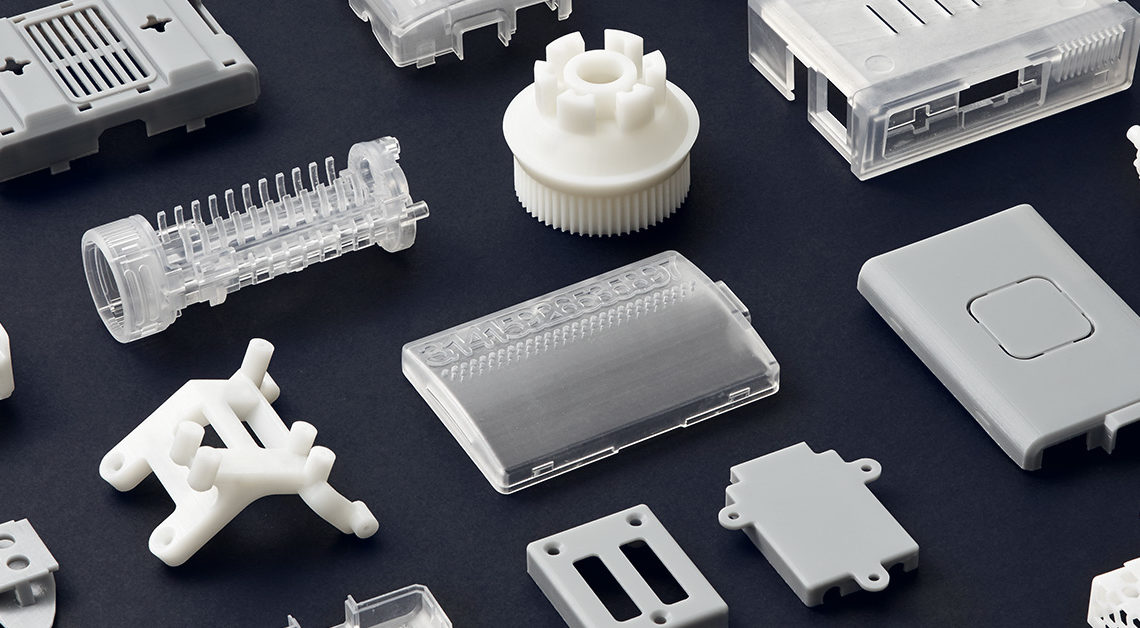 Shapeways uses tough SLA plastic materials for 3D printing models, prototypes and patterns. Image courtesy of Shapeways. In the fourth quarter of 2021, Shapeways publicly launched the first phase of its Software-as-a-Service (SaaS) offering under the brand name Otto to gain feedback on product-market fit, pricing, and optimal use cases. Furthermore, the company said Otto is "a purpose-built SaaS platform which provides traditional manufacturers with a simpler, faster and more flexible path to 3D printing for industrial-grade production." This software platform is considered a differentiating factor at the company, especially now that it has begun to offer that software to manufacturers to reap the same types of benefits as Shapeways, including efficiency and better economics with an off-the-shelf solution. One of the critical benefits of Otto is that it can help accelerate the digital transformation by drawing the attention of traditional manufacturers, minimal and medium-sized, who are not usually able to invest the capital and time necessary to digitize their processes. Commenting on future expectations, Shapeways CEO Greg Kress described the company as well-positioned to capture and expand market share in 2022 as these investments continue to ramp and contribute to its long-term growth.
During an earnings call with investors, Chief Financial Officer Jennifer Walsh warned of the continued macro uncertainty, including potential inflationary pressures, supply chain challenges, and geopolitical unease. For this reason, management chose not to provide full-year guidance for 2022 but said they are optimistic about the company's progress and anticipate first quarter sales to be between $7.3 million and $7.4 million, along with an increase in business development resources and the ramp up of sales towards the back half of 2022, which will help pressure margins in the coming year. As the company executes its strategic growth plan and follows its roadmap, it hopes to develop new initiatives and deliver high-quality solutions to its customers. Looking forward, the business claims to seek complementary strategic acquisitions that will add capacity and manufacturing capabilities, as well as increase its reach with an already installed base. In addition, expecting to see an inflection point in the overall adoption of digital manufacturing solutions, Shapeways is getting ready to capture more customers than ever and plans to do so through its planned investments, additive manufacturing capabilities, and the continued rollout of its software offering. The post 3D Printing Financials: Shapeways Posts Profit for FY2021, Weak Outlook for 2022 appeared first on 3DPrint.com | The Voice of 3D Printing / Additive Manufacturing. |
| MolyWorks Obtains ISO: 9001-2015 and AS: 9100AD Posted: 07 Apr 2022 07:00 AM PDT MolyWorks has obtained ISO: 9001-2015 and AS: 9100AD certification. ISO 9001 is an international norm for quality management systems. This certification means that it has been independently verified that a firm has done the necessary work to make its internal quality system adhere to this norm. This, in turn, means that the company has sufficiently mapped internal processes to the extent that they can perform as expected. The ISO norm allows clients to have an increased assumption that a firm can deliver on parts and services. It’s a quality signifier as well, telling you that the firm put in the time and work to perform in a more reliable and expected way. 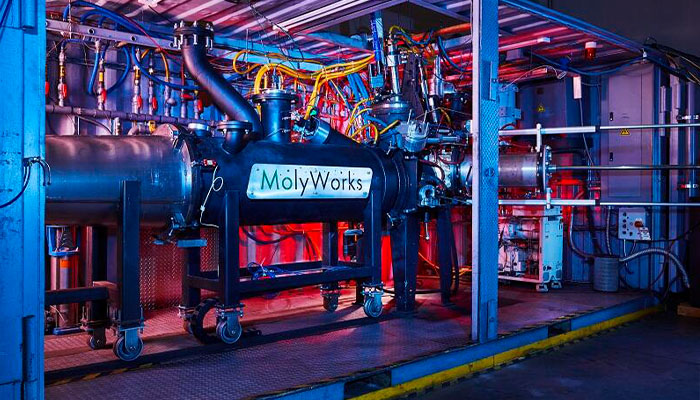 MolyWorks Greyhound. Image courtesy of MolyWorks. MolyWorks’ CEO Chris Eonta said:
The AS: 9100AD certification is a standardised quality management system specifically for the aviation, defence and space industries. This stringent system is often required to work for or with other organisations that have AS: 9100AD. This is again a quality signifier in that, absent of other information; you are dealing with a serious firm that wants to be excellent. It is also a gateway to working with these large exigent industries. Obtaining these norms and certifications is not easy. I’ve been involved in a few, and it’s frankly a nightmare. However, for companies engaged in aerospace and ancillary industries, they are a right of passage since it is a way to tell your peers and large companies alike that you’re serious about making things, promises most of all. 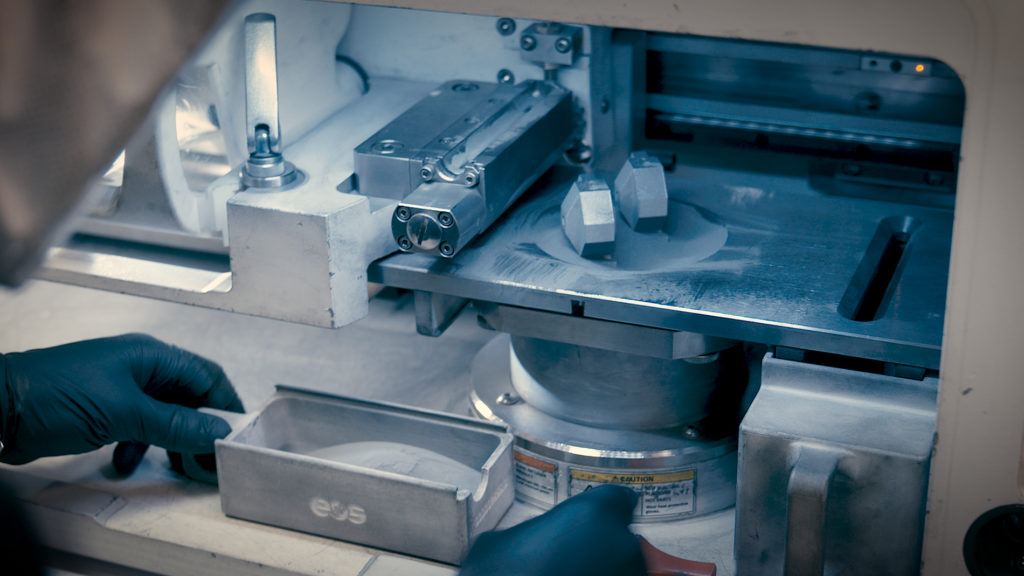 The company’s in-house M290 building parts made from scrap. Image courtesy of eos. Indeed MolyWorks spent over 1800 hours obtaining these certifications for the firm and its Cloverdale Greyhound production facility. This lets the firm make its powders according to its norms and should help it gain wider acceptance in the military and aerospace supply chain. Indeed the firm is already a long-term supplier to the US Department of Defense (DOD) through obtaining early funding for its containerised atomisation solution for metal powder manufacturing. In addition, MolyWorks has worked for NASA, the US Air Force, the Navy, and Army in making powders. Through its localised atomisation facilities, MolyWorks could be very important for these and other similar organisations. 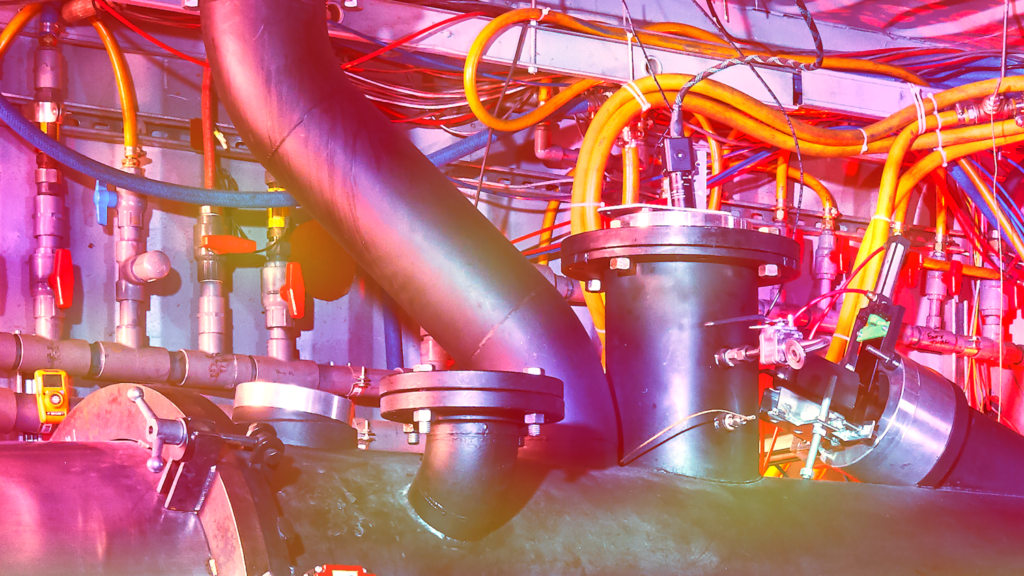 MolyWorks helps companies process scrap to create new parts all in one place. Image courtesy of MolyWorks. MolyWorks could turn scrap metal into metal powder bed fusion powder locally. This could mean that an Army base could recycle its waste metal and print replacement parts. A modern military is essentially UPS with guns. In some cases, six people are working to deliver one soldier their much-needed goods. A kilo of material at a forward operating area could cost thousands of dollars due to the transport costs and the cost of protecting transport. Any time saved in getting new parts may save battles or soldiers, whereas any money saved will be quickly spent on getting troops more kits that they need more effectively. Famously an army marches on its stomach. We have more to worry about on the modern battlefield than just grain, however. Specific parts are crucial to keeping the army working. Increasingly 3D printing will be able to make these specific bits as required when they are needed. What’s more, the firm could make recycling metal into powder cost-effective in an environmentally sustainable way. This would be of interest to companies recycling metal or those wishing to burnish their green credentials. Making powder manufacturing more spread out also lets companies that don’t have gas atomisation facilities put powder manufacturing close to where parts are needed. For countries bereft of atomisation facilities, putting in a MolyWorks Greyhound could make them more resilient and less dependent on others. Specifically for defence, MolyWorks has a ginormous opportunity on its hands. For a merry band of inventors who started on a cofounder’s lawn, MolyWorks has a spectacular upward trajectory and potential. That is if it delivers on quality. The post MolyWorks Obtains ISO: 9001-2015 and AS: 9100AD appeared first on 3DPrint.com | The Voice of 3D Printing / Additive Manufacturing. |
| 3D Printing News Briefs, April 7, 2022: Construction & Research Posted: 07 Apr 2022 06:30 AM PDT Today’s 3D Printing News Briefs will start off with some construction news, as COBOD has released a 3D construction printer configurator, and a Japanese company says it’s 3D printed a house in under 24 hours. Moving on to research, the US Army has invested about $4 million in Auburn University’s AM work. Finally, researchers from Germany used a BMF microscale 3D printer to create hydrowells that can be used to culture 3D cellular spheroids in microgravity. COBOD Releases “World’s First” 3D Construction Printer ConfiguratorDanish 3D construction company COBOD International has developed what it says is the first live, 3D visualized configurator for creating construction 3D printers. This new tool for real estate developers and contractors will allow them to estimate better how long it will take to 3D print a specific building and determine how much concrete material will be needed to complete the build. Users can first modify the printer’s width, length, and height and use the configurator, available as both a web app and an app for Android and iOS devices, to determine that, for instance, it can print a 170 m2 villa in just 26 hours.
House 3D Printed in Under 24 Hours?Japanese company Serendix Partners has a concept for 3D printed spherical houses, which look like decently attractive concrete pods. The idea is to keep the cost of these pods down enough that purchasing one would be akin to buying a budget-friendly new car. Of course, the company needs to fabricate them pretty quickly to succeed and claims that it has achieved its goal of building one of these 3D printed homes, which it calls Sphere, in less than 24 hours. What Serendix did was 3D print a 20-metric ton reinforced concrete frame for the structure, which it says was completed in 23 hours and 12 minutes; assembly of the pieces took three hours. As far as I can tell, the interior of the 3D printed Sphere home isn’t shown anywhere, and the company also says that a lot of the construction time was spent painting the exterior and not printing the structure. If this is all true, it would indeed be exciting, but I don’t know if I believe it. At the very least, it’s a 3D printed concrete shell that could have been 3D printed in less than 24 hours but is likely unfit for a person to actually live in this way. But, Serendix, which had help from domestic and overseas partners, says that the 10 square meter structures will hopefully be sold for three million yen and will likely be used as disaster relocation shelters and camping cabins through its consortium partners. So luxury homes, these are not. Auburn University Receives AM Research Grant from US Army L-R: Co-principal investigators are professors Masoud Mahjouri-Samani, Shuai Shao, Nima Shamsaei, and Elham Mirkoohi. Moving on, Auburn University has received a $4.3 million grant from the US Army to support its additive manufacturing research. With this funding, the university’s National Center for Additive Manufacturing Excellence (NCAME) will soon begin a two-year project about process, parts, and material qualification to help speed up the adoption and implementation of AM in Army operations and combat readiness.
Shamsaei continued by noting the difficulty in ensuring the transferability and consistency of process output between different 3D printers. But the NCAME researchers hope to use their funding to achieve this through machine learning and mechanical testing. Microscale 3D Printed Hydrowells for Microgravity Cell CulturesFinally, researchers from the Buchmann Institute for Molecular Life Sciences (BMLS) at Goethe University used the microArch S140 by Boston Micro Fabrication (BMF) to print microscale vessels called hydrowells, used to culture 3D cellular spheroids in microgravity. Hydrowells do a better job than glass or plastic vessels of preventing individual spheroids, which put themselves into sphere-like formations to offer a biocompatible space, from “aggregating into uncontrolled sizes.” For the Spheroid Aggregation and Viability in Space (SHAPE) experiment, supported by the German Aerospace Center (DLR) and to be performed on the International Space Station, special hydrowells with a cylindrical cross-section, funnel-shaped entrance, and either a U-shaped, conical, or truncated bottom section were required, as these shapes help achieve the formation of spheroids and long-term cell culturing. Because of its ability to offer high resolution and smooth surface finishes, microscale 3D printing was used to print convex positive molds for the hydrowells out of BMF’s strong, high-temperature HT200 resin.
The post 3D Printing News Briefs, April 7, 2022: Construction & Research appeared first on 3DPrint.com | The Voice of 3D Printing / Additive Manufacturing. |
| State of the Hypersonics Arms Race: US to Work With Australia and the UK Posted: 07 Apr 2022 06:00 AM PDT We’ve previously discussed the pending hypersonics arms race and an effort to close the perceived hypersonic missile gap with China and Russia. It is clear that an arms race in hypersonics is occurring between the US and its near-peer rival China. Today the US, the UK, and Australia have announced that they will make hypersonics together. The leaders of all three countries announced that,
This is partially in response to China’s perceived advanced hypersonics capability and Russia’s claimed use of hypersonic weapons. The US just announced that it has tested a hypersonic weapon in March. The US flew the Hypersonic Air-breathing Weapon Concept (HAWC) off a B52 bomber for several minutes. The US alone will spend over $4.7 billion on hypersonics in the 2023 budget. Is the US behind in Hypersonics?We don’t really know if this is true. However, the US perceives that it is behind and this, as previously stated, is a good way to get the US government to leapfrog other people in their capabilities. Without irony, the US government refers to a Sputnik moment in hypersonics development by its adversaries. For years, the US thought it was behind Soviet Russia in missiles and thought there was a missile gap. This time around, it may also be imagined. Both China and Russia claim or indicate that they have higher performance vehicles, which is deemed possible by China and improbable by Russia. Russia air launching a hypersonic missile. In their case, they use a Kh-47M2 Kinzhal, which is a 9k720 Iskander short-range ballistic missile strapped to a fighter jet. ICBMs and other missiles are already capable of hypersonic flight. So Russia is playing with semantics here rather than technology. The country was working on the Avengard vehicles previously that were true hypersonics. What China and the US are trying to do is manufacture a Hypersonic Glide Vehicle, which Russia’s Kinzhal is not. The Chinese DF 17 carries a DF ZF hypersonic glide vehicle that could fly at Mach 5 and renter the atmosphere at Mach 10. What is a hypersonic glide vehicle?An HGV is a powered maneuverable craft capable of controlled flight that can be launched into space, orbit, and renter. Think of it as a bad shuttle. Rather than go in big predictable arcs like ICBM’s, HGV’s can orbit, enter suddenly and at high speed, making a fast direct approach to a target. Therefore, it can avoid a lot of space-based interceptors and outmanoeuvre other missile defense systems at high speed. Sure, ICBM’s are fast, but they are predictable. On the other hand, HGVs can manoeuvre, change trajectory suddenly, and travel at extremely high speeds. Current stage technologies have no reliable interception solution for HGVs. Indeed the US Next Generation Interceptor missile defence system, which it hopes to deploy in 2028 at $78 billion, probably cannot deal with HGVs. By being manoeuvrable and unpredictable in space, in the lower atmosphere, and close to the earth’s surface, HGVs could reign supreme as a targeting solution to deliver warheads or simply work through the immense kinetic energy created by a thing going into you at Mach 10. HGVs could loiter, ready to pounce or be launched, and come down anywhere on earth in an hour or two. They can also be used as satellites to be delivered quickly to a location to jam, catch signals or communicate. They could also be used as launch vehicles for satellites or be used to kill satellites. HGVs are the high ground. How can the US be behind in hypersonics?The US has been busy with wars in Afghanistan and Iraq and has spent inordinate amounts of money on weapons systems needed for those battlefields. The US will also spend over a trillion on high-tech projects such as the joint strike fighter in an attempt to reign supreme over the modern battlefield. The US defence establishment is also notoriously inefficient, with cost overruns being the norm. With its war in Iraq costing nearly two trillion and the war on terror costing $8 trillion overall, the country has poured money into blood and sand while China has upgraded its military. In fact, China has spent its money in a directed way to be able to negate US naval and air power. The nation is most interested in being in control of its own sphere in south east Asia, in being able to resist any attempts at a US invasion, and ultimately taking Taiwan comfortably while beating off the US. Subsequently, the country will try to rise to become the world’s unipolar superpower. These narrow immediate goals contrast significantly with the US global war on terror-global policeman spend, which focuses on different training, kits, specialised gear, and capabilities. Generally, China has an advanced manufacturing capability that is much less expensive than and faster than the US. Therefore, it is cheaper to make things in China, like missiles or iPhones, which means a cost advantage. Also, for the US, China is increasingly becoming “the worry,” but it still is one of many other things the country has to be concerned about. Thus, China can develop these weapons with more focus in a more economical way. What will the US do to catch up on Hypersonics?
Currently, with the HAWC, it is working on commercialising scramjet technology. This is a supersonic combustion engine where the speed and motion of the vehicle compress air supersonically in a convergent-divergent nozzle where it and fuel are combusted. The US has been working on scramjets since the 1960s. Public concepts such as the Boeing Waverider have gone to Mach 5 and over speeds but reportedly only for a few seconds or minutes. Why is 3D printing important to hypersonics?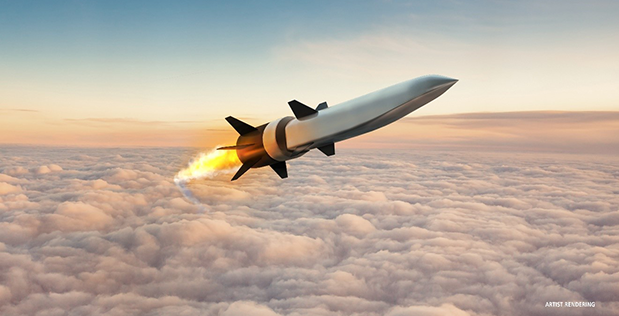 DARPA’s HAWC With 3D printing, you can save weight which is very important if the materials are expensive and cutting edge. If these materials are difficult to cut, then they are also likely to be good candidates for 3D print inexpensively. Reducing part count can make these vehicles more efficient to develop and deploy. 3D printing will also let you have a better buy to fly. As NASA has shown, these vehicles will be cheaper and faster to develop with 3D printing than casting and forging. They will also be more affordable to iterate. Cooling is supremely important on these vehicles, and optimised heat sinking, cooling, and structures will outperform those made conventionally throughout. Optimised structures are especially important in the engine and throughout such a craft, and with 3D printing, we can make the best textures and properties throughout. We are the technology that can be used for much of this vehicle to allow you to make an integrated solution that is optimised for the task quickly. What is the outcome of the current announcement?This is excellent news for CSIRO, Australia’s national research agency on many topics with a significant role in 3D printing. This is fantastic news for Titomic, an Australian firm that uses cold spray to 3D print. Another Australian firm Spee3D will also benefit from this. It is excellent news for GE and Renishaw, whose powder bed fusion technologies may be tapped to make these parts. Finally, it’s great news for Lockheed, Boeing, Raytheon, and Northrop Grumman, who all have made major investments in 3D printing and have been working on hypersonics for decades. We’re seeing a new alliance form specifically between Australia, the UK, and the US on the back of a submarine deal between the three. This is distinct from NATO and the Five Eyes alliance, which traditionally has been the US’s closest friend on spy and secret stuff. Both New Zealand and Canada were either not asked or did not want to play the hypersonics game. This is a shame, especially since Canada and the US share a continent and could cooperate significantly on missile defence. It does not include any EU members and would be an effort independent of Europe. On the whole, this goes significantly towards making the UK relevant again on the world stage. In that light, it will also be suitable for BAE. It may be good for Cobham and other UK contractors as well. The post State of the Hypersonics Arms Race: US to Work With Australia and the UK appeared first on 3DPrint.com | The Voice of 3D Printing / Additive Manufacturing. |
| AM Coalition Sends Advisory Letter to Congress on America COMPETES Act Posted: 07 Apr 2022 05:30 AM PDT Back in February (on the 4th, to be precise), the U.S. House of Representatives passed H.R. 4521, a bill that continues the questionable American tradition of using unwieldy acronyms as names for pieces of legislation. In this case, the bill's name is the America COMPETES Act: as you surely must've guessed, "COMPETES" stands for "Creating Opportunities for Manufacturing, Pre-Eminence and Economic Strength." The law touches a wide array of regulatory areas, from "financial regulations for cannabis-related businesses" to "requir[ing] the Small Business Administration to issue guidance for childcare operators." However, the most relevant items in the bill for the 3D printing industry include:
Complementing the COMPETES Act was the "United States Innovation and Competition Act of 2021 (USICA)(S. 1260).” Formerly known as the Endless Frontier Act, this legislation sponsored by Senators Chuck Schumer from New York and Todd Young from Indiana entrusts $110 billion for basic and advanced technology research over five years. Both the America COMPETES and USICA acts are each chamber’s written legislation to compete with China. Furthermore, according to the American Action Forum, the central component in both of them is the Creating Helpful Incentives to Produce Semiconductors Act (CHIPS), a $52 billion subsidy program for private firms that build semiconductor production facilities in the US. The America COMPETES Act passed through the U.S. Senate on March 24, 2022. Both houses of Congress approved it with strong bipartisan support, and the bill is now in reconciliation. A few days later, on April 1, the Additive Manufacturing (AM) Coalition, a 501(c)(6) (tax-exempt business association) based in Washington, D.C., sent a letter addressed to the bill's sponsor, Democratic Congresswoman Eddie Bernice Johnson of Texas, as well as Congressman Frank D. Lucas from Oklahoma, the ranking Republican member of the House Committee on Science, Space and Technology. The crux of the letter, which is signed by the AM Coalition's Executive Director, L. David Cherington, is stated in the second paragraph, which reads:
Regarding workforce development, the letter argues that the American labor market is "considerably behind" Asia and Europe when it comes to AM. Accordingly, the Coalition advises that the government should prioritize easing the financial burden of investing in AM equipment for all colleges, universities, and general vocational training institutions that offer programs involving AM. The organization also suggests that Congress encourage and facilitate the creation of more AM-related programs at schools across the country. 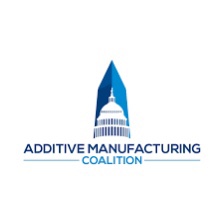 Image courtesy of AM Coalition As for micro and nanoscale 3D printing of electronics, the letter notes the severe semi-conductor shortage that started at the beginning of the pandemic––which remains one of the favorite obsessions of global policymakers. Furthermore, the AM Coalition asks Congress "fund not only traditional manufacturing technologies but also the U.S. companies who today can print electric circuits and chips (…)." Since, as the letter also notes, the companies currently printing electric circuits and chips can't yet do so "at the scale to solve the current shortage," the Coalition requests explicitly that Congress set aside "at least 5% of the funding" for domestic production of semi-conductors in the COMPETES Act with the objective of "cutting edge manufacturing technologies, including [AM]." If legacy electronics giants do indeed end up significantly increasing their adoption of AM, the semi-conductor shortage could turn out to be the singular greatest long-term catalyst driving them in that direction. While 5% may not sound like much, with the bill (in its current form) providing $50 billion in funding for the semi-conductor industry, that would amount to $2.5 billion going to semi-conductor production achieved with advanced manufacturing techniques. In turn, a sizable chunk of that—probably the majority—would go to the AM sector. This, and the letter as a whole, in my mind, highlights the cognitive dissonance present in all the questions that still pop up along the lines of, "When will AM become a 'real' industry?" Regardless of how much of the semi-conductor funding ends up in AM, the answer to that question is that it already is. The Additive Manufacturing Coalition letter is available here. The post AM Coalition Sends Advisory Letter to Congress on America COMPETES Act appeared first on 3DPrint.com | The Voice of 3D Printing / Additive Manufacturing. |
| You are subscribed to email updates from 3DPrint.com | The Voice of 3D Printing / Additive Manufacturing. To stop receiving these emails, you may unsubscribe now. | Email delivery powered by Google |
| Google, 1600 Amphitheatre Parkway, Mountain View, CA 94043, United States | |
